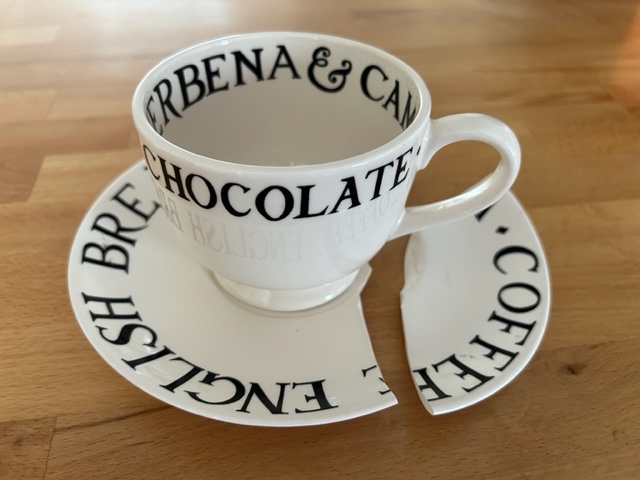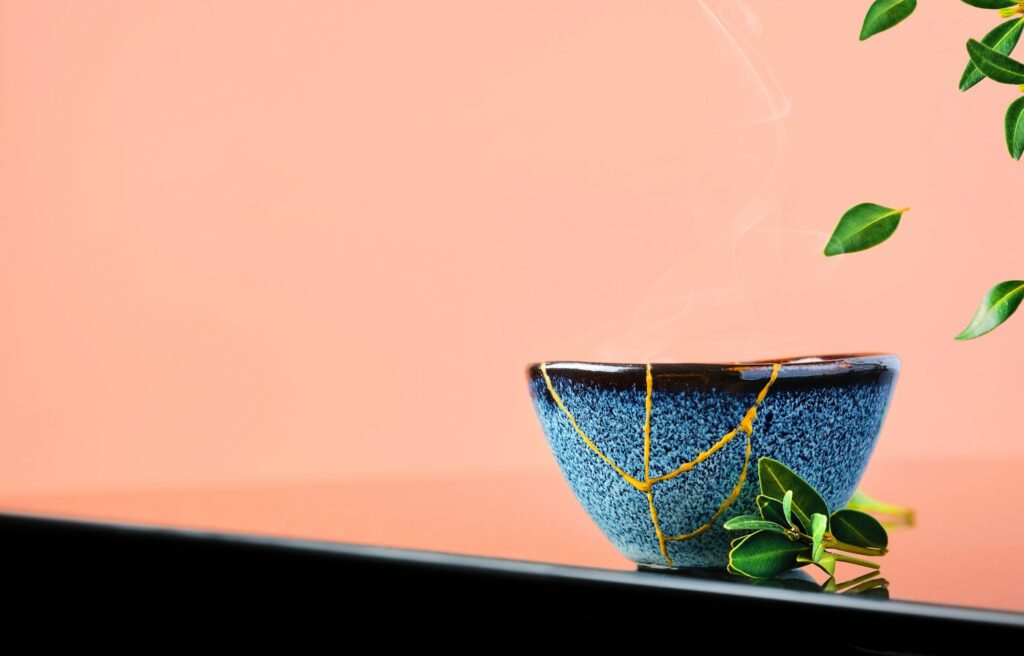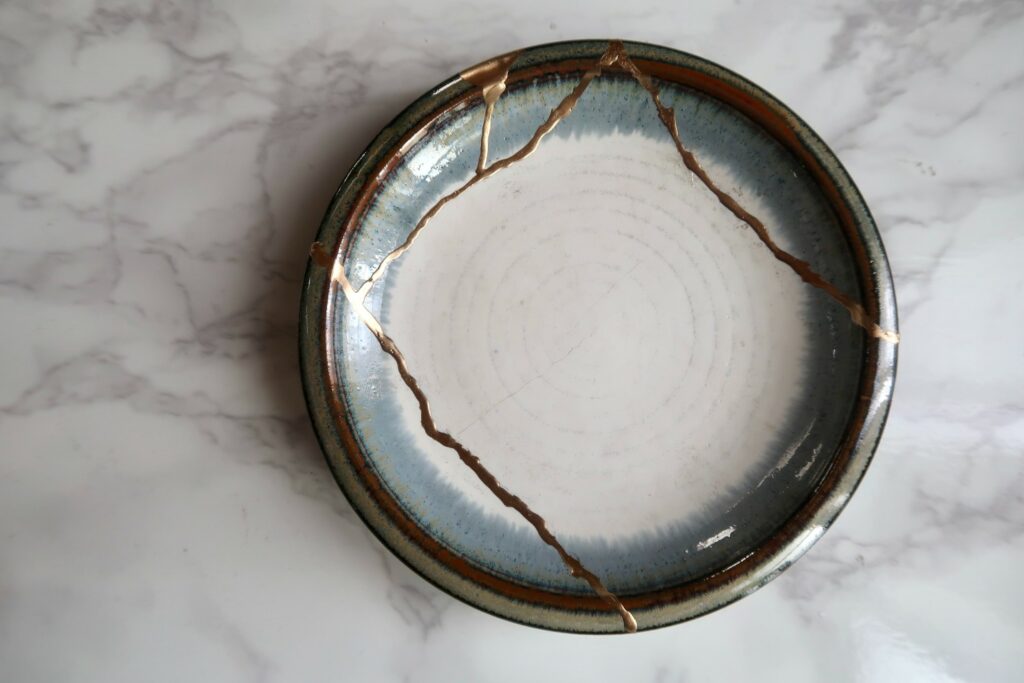
I recently broke the saucer of a rather beloved Emma Bridgewater tea set that I’ve had for over 25 years.
As I sadly searched online for a replacement (available pre-loved on eBay as I discovered), I also considered gluing the original saucer back together. It felt too hard to throw this old friend away after so many years.
This reminded me of the beautiful Japanese art of Kintsugi, which I first saw on a trip to the Japanese Grand Prix about 20 years ago. Meaning ‘golden joinery’, Kintsugi is a traditional repair method whereby the broken or chipped parts of much-loved pottery are glued back together with a special lacquer. The seams are then painted with gold or silver powder, making the overall finish quite unique and even more beautiful. Rather than attempting to hide the cracks and imperfections, Kintsugi highlights and celebrates them, turning the broken pieces into unique works of art.

In our modern culture, we often strive for perfection. We want the perfect body, the perfect house, the perfect family, job or holiday. At school we’re striving for A+ grades. When we’re at work, we’re trying to create flawless presentations, get outstanding performance ratings or seal the ultimate deal. As communications professionals, we often agonise over language, second guessing our grammar and word choices. We’re then horrified when we spot a rogue comma in a published article.
Of course, setting high standards and aiming for success will help us to deliver on our goals and improve performance, and there’s nothing wrong with that. Formula One teams strive for perfection in search of the fastest laptime. But it is not always helpful to view everything that falls short of perfection as unacceptable. At its worst, perfectionism can drive us toward impossible expectations. It’s closely linked with prevarication, which prevents us from putting our work out into the world until we’re confident it’s faultless.
Kintsugi teaches us to acknowledge and accept the flaws and imperfections in ourselves and others. Instead of seeing them as something negative or undesirable, we can recognize that our imperfections are what make us unique. Sometimes we just need to be ‘good enough’.
It reminds us that life is imperfect, and that’s okay. By embracing imperfections, we can reduce our self-criticism, find joy in the present moment, and cultivate a healthier perspective on ourselves and the world around us. Our failures and challenges can become sources of learning, strength and wisdom.

The art of Kintsugi encourages us to embrace imperfection, accept change and find strength in our vulnerability. It offers valuable insights into how we can live more authentically, compassionately, and gracefully in a world that is inherently imperfect.
My limited artistic skills don’t stretch to skilful Kintsugi repair techniques, but I will be buying a tube of glue to fix my saucer. It may no longer be perfect, but I will still love using it.
What imperfections could you be embracing in your life?
As Leonard Cohen says:
Ring the bells that still can ring,
Forget your perfect offering,
There is a crack in everything,
That’s how the light gets in.
